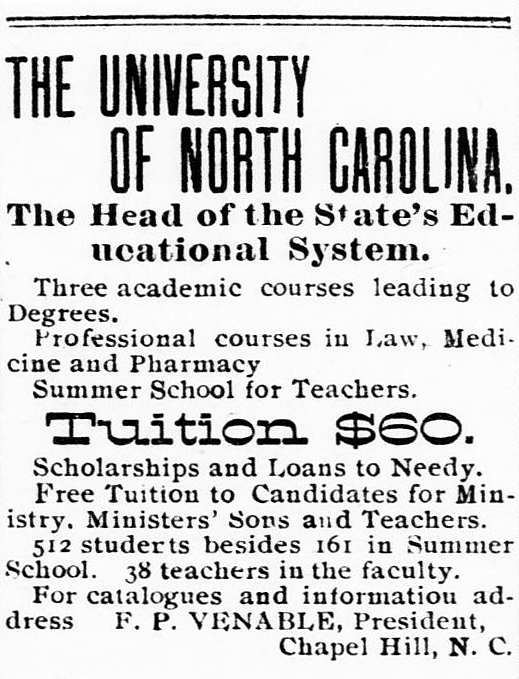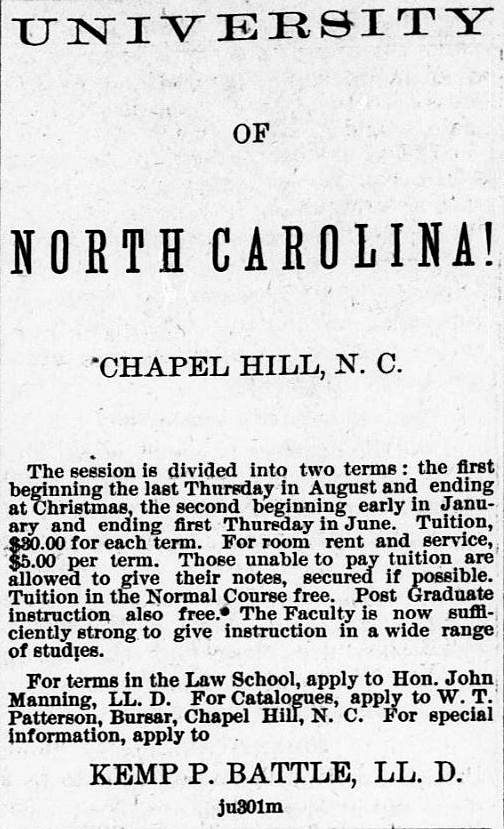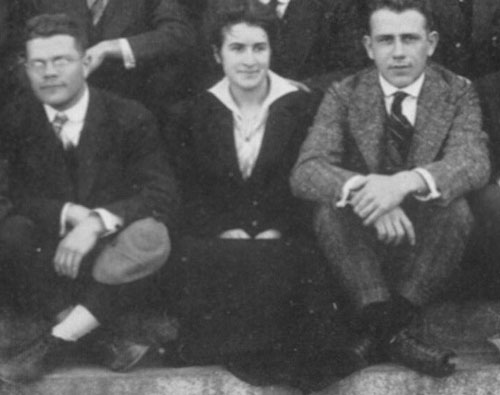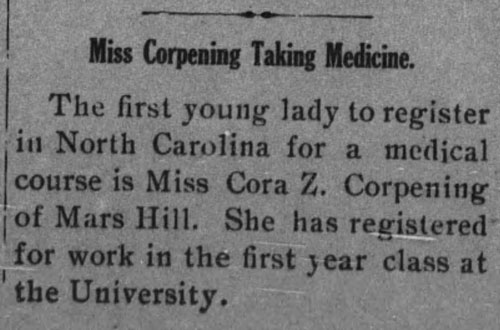
A gallery in the William Hayes Ackland Art Center during its opening weekend, 19-20 September 1958. (Scene cropped from a negative in the UNC Photo Lab collection.)
Birthed as the William Hayes Ackland Art Center, the Ackland Art Museum turns sixty today. The art center held a special preview for UNC faculty on Friday evening, September 19, 1958. The official dedication ceremony took place the next morning, featuring a talk titled, “The Role of the College Museum in America” by S. Lane Faison, head of the art department and director of the art museum at Williams College in Massachusetts. The opening exhibition drew paintings, prints, etchings, drawings, and sculptures from the collections of several college and university art museums across the country.
The university slated Joseph Curtis Sloane, then at Bryn Mawr College, to become chairman of the Art Department and director of the new art center.
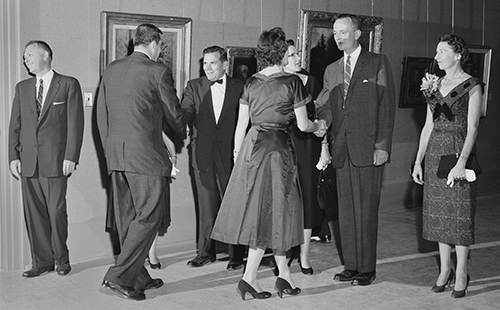
Welcoming visitors to the Ackland Art Center are, left to right, J. Carlye Sitterson, Dean of the College of Arts and Sciences; William Aycock, UNC-Chapel Hill; and Joseph C. Sloane, incoming chair of the Art Department and director of the Ackland Art Center. (Scene cropped from a negative in the UNC Photo Lab collection.)
William D. Carmichael Jr., Vice President and Financial Officer of The University of North Carolina, accepted the building on behalf of the consolidated university.
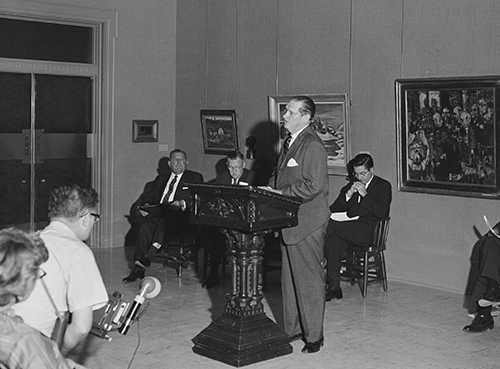
William D. Carmichael Jr. accepting the Ackland Art Center building on behalf of the university. (Scene cropped from a negative in the UNC Photo Lab collection.)
Photographic black-and-white negatives and prints in the University of North Carolina at Chapel Hill Photographic Laboratory Collection document both events, plus a number of artworks loaned for the debut exhibition.
Care to learn more about the Ackland’s origins? The Daily Tar Heel covered the story, including the background of the William Hayes Ackland bequest and the works of art in the opening exhibition on September 18th in advance of the dedication ceremony, and reported on the formal opening on September 21st.

